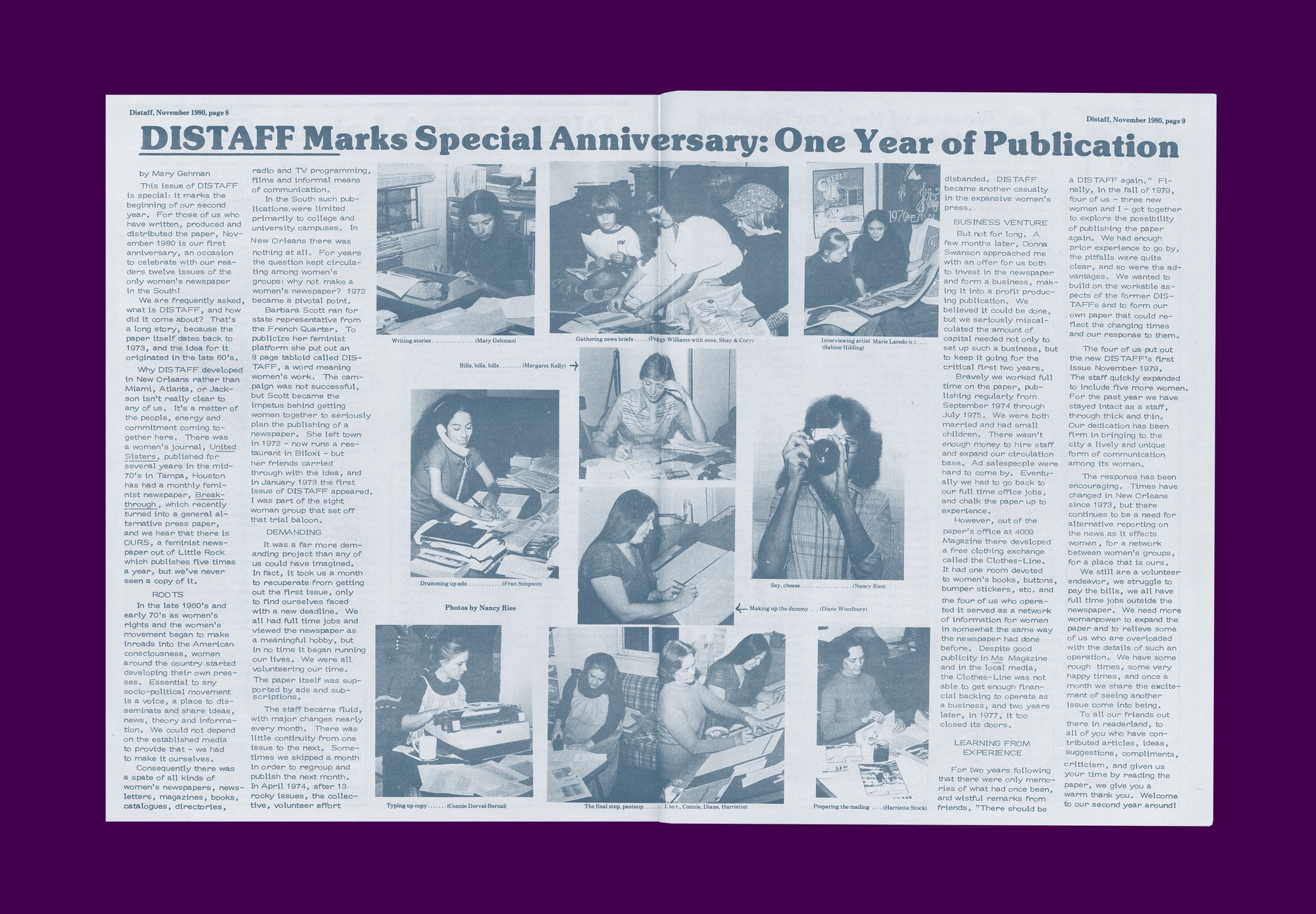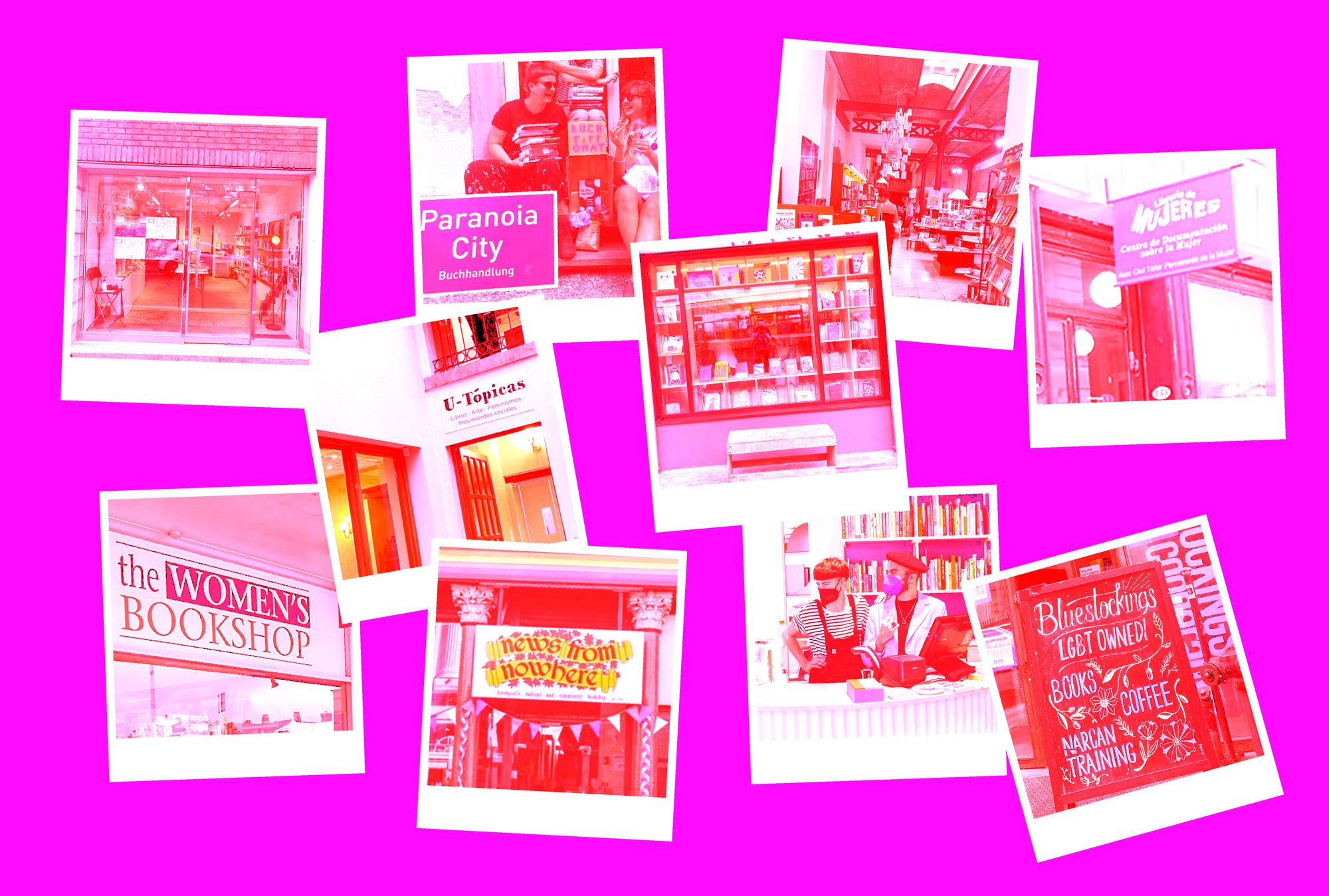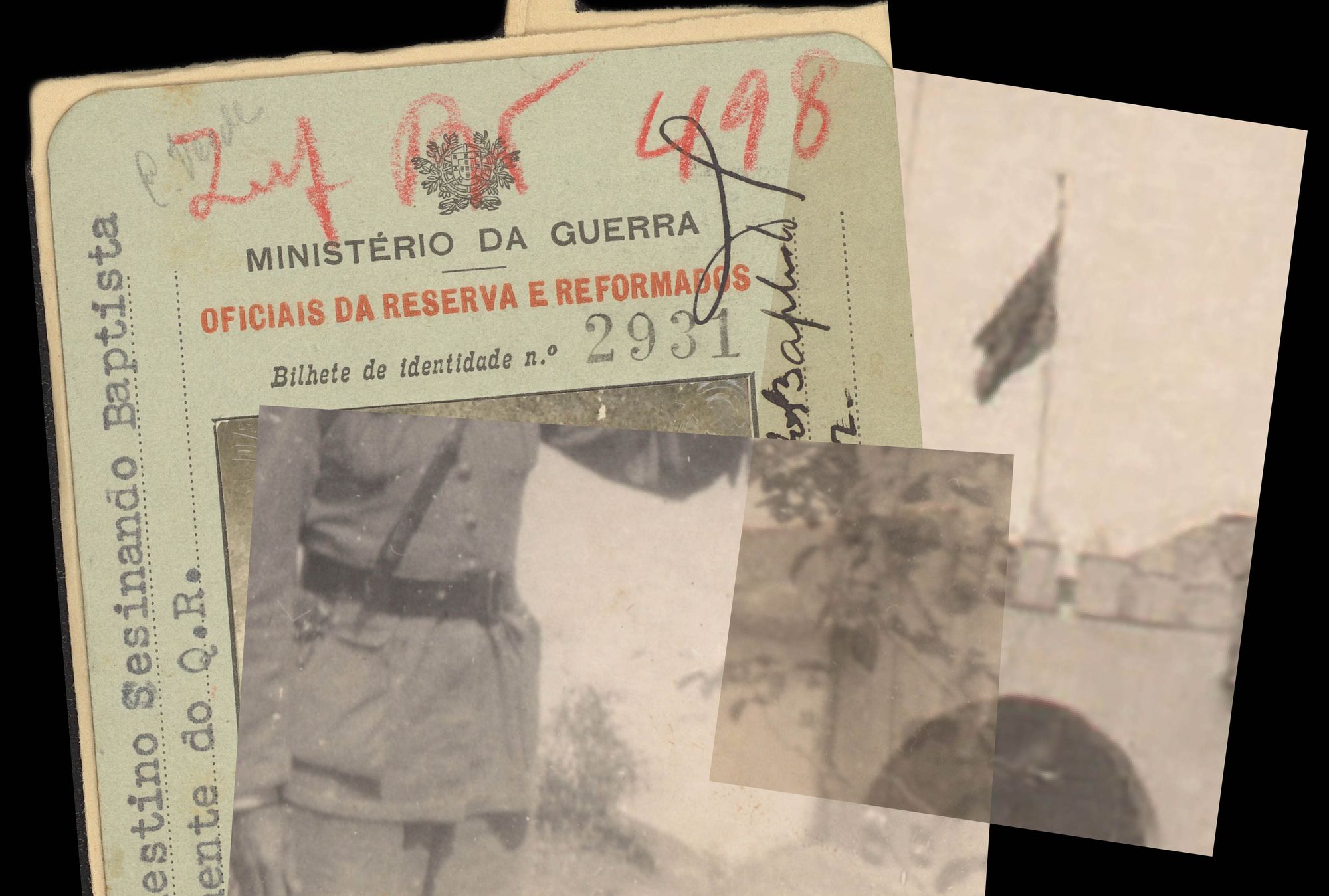
Distaff was the city of New Orleans’ first feminist periodical, and it was to be its only one. Looking back at this newspaper’s fraught yet impactful existence between the years of 1972 to 1982 is a cause for celebration, but it also serves as a cautionary tale for anyone seeking to publish outside the mainstream...
Distaff wasn’t born out of thin air, and nor did it cease to exist without any warning signs. In fact, like many feminist publishing ventures of its kind and great ambition, the story of Distaff is one of continual appearances and disappearances. Its first appearance was in the form of a suggestion, in 1971, when the lesbian politician, artist, and bar-owner Barbara Scott wrote an eight-page manifesto as part of her campaign running for a seat in the Lousiana State Legislature. In it, she called for a feminist platform called “Distaff”—a word historically describing a tool for spinning fibres. Scott never took to office. But her manifesto inspired a coalition of women activists to gather together and begin publishing.

Distaff first materialized as a preview issue in 1972 with the tagline “the test of civilization is the estimate of women.” Its front page featured a personal account by a woman named Brenda Davillier, who had tried to run for US Senator in Louisiana but was met with closed doors. It’s “because I was a woman and because I was black,” she wrote in her article. In February 1973, Distaff appeared with its second issue and a new tagline: “New Orleans monthly feminist forum.”

The paper was entirely staffed by women and published submissions by women contributors. Mary Gehman, who had left her job as a journalist at the local State Item newspaper after she’d had enough of rife sexism in mainstream publishing, acted as Distaff’s main editor. Gehman ran the newspaper alongside a changing group of local feminists, among them Pat Denton, Clay Lattimer, Phyllis Parun, Suzanne Pharr, and Darlene Olivo. Distaff’s content was mostly shaped by the women that worked there; it strove to be a place for the voices whose needs and struggles misinterpreted or minimized by other outlets. Articles on reproductive rights, pay equity, justice for people of color, rights in the workplace, lesbian activism, the equal rights amendment, as well as literature and arts, filled the newspaper’s pages.
Keeping the newspaper going was a struggle from the very outset. All of its working women were volunteers without pay. Some had very little prior experience in publishing, and many were working part-time in addition to managing their jobs and families. It proved difficult to find advertisers. Most of the advertising came from progressive religious groups, feminist organizations, or small shops with feminist principles; all had limited money to spend on sponsorship. While staff commitment was high in the beginning, it soon waned. Four months into publishing, the number of staff had depleted from eight to three. Those that remained felt overworked. Their self-exploitation, in devoting so much time to a project without pay, weighed heavily. In January 1974, Distaff slimmed down from twenty professionally-laid pages to a twelve-page, hand-typed version, because the volunteer layout woman had quit. Just one month later, the paper celebrated its first anniversary with a new tagline—“for, by and about women”—alongside a desperate call for support from readers. But this proved to be in vain. May 1974, the newspaper ran out of money and stopped publishing.

“Distaff is back,” Gehman wrote in an editorial the following September. Over the summer, she’d struck up a fruitful collaboration with Donna Swanson. The two of them—the former a white feminist with Mennonite background and the latter a Black feminist with Catholic upbringing (as they later would self-identify in an editorial)—co-ran and co-edited the newspaper full-time. Another new tagline crowned the paper a “news forum for southern women.” Swanson’s family helped bankroll Distaff’s new lease of life, and also provided space in their home for the newspaper’s production (until it could later afford an office of its own).

“We don’t have any more to spend,” wrote Swanson in an editorial only four months later, alluding to both finances and personal energy. “The most difficult part of this business is getting the paper distributed and getting advertising to support it.” Since they were such a small operation, it wasn’t financially feasible to work with a distribution company. And when the editors distributed the title themselves, they faced opposition. One local newsstand-owner wouldn’t even look at Distaff—he wasn’t interested in a “woman’s paper.” Another agreed to sell the paper but buried it in the back of the shop, under stacks of non-local monthlies. These shops carried pornographic titles, “but they would not make room for one publication that supports women,” as Swanson put it. In August 1975, Distaff ceased publishing. Again.

This time, it took a little longer for Distaff to rise from its ashes. But it did—seeing as no other feminist title had emerged in the South in its absence. A brand new issue appeared in November 1979. “Distaff is like the proverbial cat: they say it has nine lives, but no one keeps close count,” the editorial jokingly stated. It’s four women strong team, among them Gehman, hoped once more for the support from local women. A new tagline (of course) read: “dialogue for southern women.” And for the first time, Distaff specifically welcomed help from men. But old hardships continued to plague the venture.
Distaff’s November 1980 issue included two articles that chronicle the difficulties in making and managing the newspaper. The first article is a farewell letter by co-editor Connie Dorval-Bernal, who was expecting her first child. Her impending motherhood required her to leave her first “daughter,” as she referred to Distaff, saying goodbye with a long, painstaking description of their work. She remembers the copy, the commas, the typing, the ads, the counting of pennies, the biting of nails, the printing, the addressing, the labelling, the sending out, the kicking off of shoes after that, and finally, the thinking about the next impending issue that must already start.

“And yet, after all this, perhaps the most difficult aspect of all has to be mentioned… the conscious mental effort it takes to just keep going,” wrote Dorval-Bernal, “to recognize that we haven’t won the war, but to keep on struggling in spite of it all.” The page that follows her goodbye letter features a spread of images revealing the faces and processes behind the work described. An accompanying text by Gehman gives an overview of Distaff’s tumultuous story and its devoted team of nine women. “We still are a volunteer endeavour,” writes Gehman, “we struggle to pay the bills, we all have full-time jobs outside the newspaper.”

In January 1982, ten years after its inaugural issue, Distaff ran a cover story on a Black female musician from New Orleans called Chermaine Neville, a pro-choice editorial, and an interview with a local lawyer called Miriam Waltzer who ran for the judgeship. It also included a small information box calling its readers’ attention to this “New Distaff,” which has a “NEW look” and a “NEW approach to the NEWS by and about Southern women.” However, that new Distaff never made it beyond this edition. There was no other issue of Distaff after January 1982. After many lives, the feminist-newspaper-cat finally succumbed.
Mariachiara de Leo (she/her) is a graphic designer based in Italy, who is curious about how graphic design might be a tool to make sense of the reality we inhabit, and how it can be used to create connections.
This text was produced as part of the L.i.P. workshop, and has previously been published in the Feminist Findings zine.













